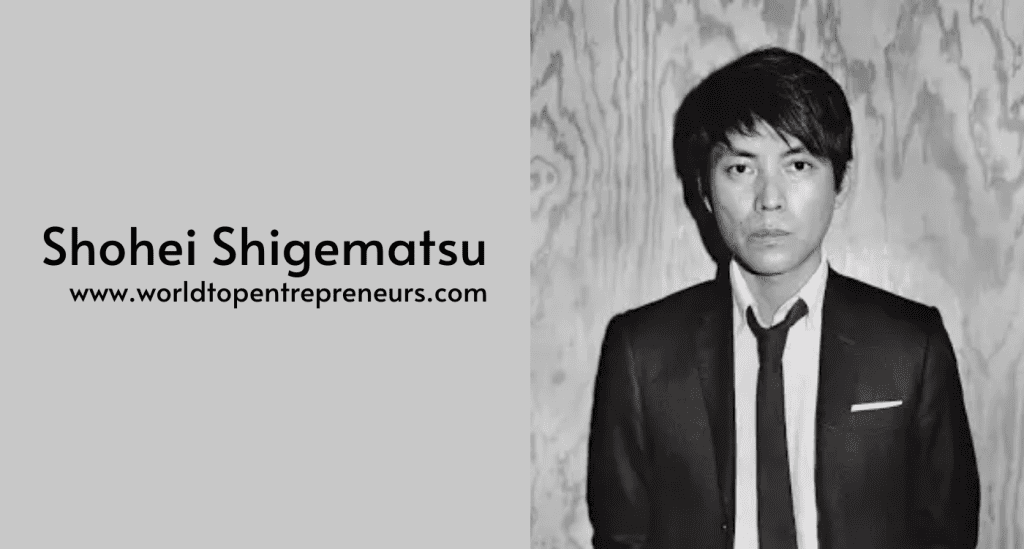In the ever-evolving world of architecture, where creativity, vision, and innovation intersect, Shohei Shigematsu stands as a transformative figure. As a founding partner of OMA (Office for Metropolitan Architecture), Shigematsu has played a pivotal role in shaping contemporary architecture and urbanism. His work reflects a commitment to pushing boundaries, exploring new design paradigms, and addressing complex urban challenges. This article delves into Shigematsu’s journey, his contributions to architecture, and the impact of OMA on the global architectural landscape.
Early Life and Education
Shohei Shigematsu was born in 1975 in Kanagawa, Japan. His early life in Japan, amidst a rich cultural and historical backdrop, provided him with a unique perspective that would later influence his architectural philosophy. Growing up in a country renowned for its blend of traditional and modern design, Shigematsu was exposed to diverse architectural styles and urban planning concepts from a young age.
Shigematsu’s academic journey began at the Yokohama National University, where he pursued a degree in architecture. His education at this institution laid the foundation for his understanding of architectural principles and design methodologies. However, it was his decision to further his studies internationally that marked a significant turning point in his career.
He went on to study at the prestigious Columbia University’s Graduate School of Architecture, Planning and Preservation (GSAPP) in New York. At Columbia, Shigematsu was introduced to a global perspective on architecture and urbanism, which broadened his understanding of the field and inspired him to challenge conventional design norms.
The Formation of OMA
The Office for Metropolitan Architecture, commonly known as OMA, was founded in 1975 by Rem Koolhaas, Elia Zenghelis, Zoe Zenghelis, and Madelon Vriesendorp in Rotterdam, Netherlands. OMA quickly gained recognition for its innovative approach to architecture and urbanism. However, it was Shohei Shigematsu’s involvement with OMA that marked a new chapter in the firm’s history.
Shigematsu joined OMA in 2006, bringing with him a fresh perspective and a wealth of international experience. His role at OMA was instrumental in expanding the firm’s reach and influence. As a founding partner, Shigematsu worked closely with Koolhaas and other partners to push the boundaries of architectural design and address contemporary urban challenges.
Architectural Philosophy and Design Approach
Shohei Shigematsu’s architectural philosophy is deeply rooted in experimentation and innovation. His approach to design is characterized by a willingness to explore new forms, materials, and spatial concepts. This experimental mindset has allowed Shigematsu to tackle complex architectural challenges and create buildings that are both functional and visually striking.
One of the core principles of Shigematsu’s design approach is the concept of “transformation.” He believes that architecture should not be static but rather dynamic and adaptable. This idea is reflected in his work, where he often incorporates elements that allow buildings to evolve and respond to changing needs and contexts.
Another key aspect of Shigematsu’s design philosophy is his focus on the relationship between architecture and urbanism. He emphasizes the importance of understanding the broader urban context in which a building exists and designing spaces that contribute to the overall fabric of the city. This holistic approach ensures that OMA’s projects are not only aesthetically compelling but also functionally integrated into their surroundings.
Notable Projects and Contributions
Shohei Shigematsu’s tenure at OMA has been marked by several high-profile projects that showcase his innovative design approach and commitment to excellence. Some of the most notable projects include:
1. Seattle Central Library (2004)
One of OMA’s most iconic projects is the Seattle Central Library, completed in 2004. Designed by Rem Koolhaas with Shohei Shigematsu serving as project leader, the library is a groundbreaking example of contemporary architecture. The building’s striking geometric form and innovative use of materials have earned it widespread acclaim.
The library’s design challenges traditional notions of library spaces by creating a dynamic and flexible environment. The building features a series of interconnected volumes and open spaces that encourage exploration and interaction. The use of transparent and reflective materials enhances the library’s connection to its urban context, creating a visually engaging and functional space.
2. China Central Television (CCTV) Headquarters (2008)
The CCTV Headquarters in Beijing is another landmark project associated with OMA. The building’s unique design, characterized by its twisted, looped form, represents a departure from conventional skyscraper designs. The project, led by Koolhaas and Shigematsu, has been praised for its bold architectural vision and innovative structural engineering.
The CCTV Headquarters serves as a symbol of China’s rapid economic development and urban transformation. Its design challenges traditional office building typologies and creates a distinctive architectural identity for the network. The building’s unconventional form and expansive public spaces reflect OMA’s commitment to pushing the boundaries of architectural design.
3. The Edificio Fondazione Prada (2015)
In 2015, OMA completed the Edificio Fondazione Prada in Milan, Italy. This project involved the renovation and expansion of an existing industrial complex into a contemporary art center. The design integrates the old and new elements of the site, creating a dynamic cultural space that fosters creativity and engagement.
Shigematsu’s role in the project involved reimagining the industrial building’s functionality and spatial organization. The result is a striking combination of historical and contemporary elements, with an emphasis on flexibility and adaptability. The Edificio Fondazione Prada exemplifies OMA’s ability to transform existing structures into vibrant cultural institutions.
Challenges and Innovations
Throughout his career, Shohei Shigematsu has faced numerous challenges in his quest to redefine architectural design. The rapidly changing nature of the architectural profession, coupled with evolving technological advancements, requires continuous adaptation and innovation.
One of the significant challenges Shigematsu has encountered is navigating the complex regulatory and cultural contexts of international projects. Each project comes with its unique set of constraints and requirements, which necessitates a careful balancing act between creative vision and practical considerations.
Shigematsu’s approach to overcoming these challenges involves a collaborative and interdisciplinary approach. By working closely with clients, engineers, and other stakeholders, he ensures that OMA’s projects address the specific needs and aspirations of each context. This collaborative mindset allows for the development of innovative solutions that push the boundaries of traditional design.
Legacy and Impact
Shohei Shigematsu’s contributions to architecture and urbanism have left a lasting impact on the field. His work with OMA has pushed the boundaries of architectural design and influenced contemporary practices in the industry. The projects he has led showcase a commitment to innovation, experimentation, and a deep understanding of the relationship between architecture and urbanism.
The legacy of Shigematsu and OMA is reflected in the firm’s continued influence on global architectural discourse. Their projects challenge conventional design norms and inspire future generations of architects to explore new possibilities. Shigematsu’s approach to architecture emphasizes the importance of creating dynamic and adaptable spaces that respond to the ever-changing needs of cities and their inhabitants.
Reflections on Leadership and Vision
Shohei Shigematsu’s leadership at OMA exemplifies the qualities of a visionary architect. His ability to blend creativity with practicality, embrace experimentation, and address complex urban challenges demonstrates the essence of effective leadership in architecture. Shigematsu’s work reflects a deep commitment to advancing the field and shaping the future of design.
His approach to architecture is characterized by a willingness to challenge conventions and explore new design paradigms. This mindset is crucial in an industry that is constantly evolving and facing new challenges. Shigematsu’s contributions to OMA’s projects showcase the importance of innovation and adaptability in creating meaningful and impactful architecture.
Conclusion
Shohei Shigematsu’s journey as a founding partner of OMA is a testament to the power of visionary leadership and innovation in architecture. His contributions to the field have redefined contemporary architectural practices and set new standards for design excellence.
Through his work with OMA, Shigematsu has demonstrated a commitment to pushing the boundaries of architectural design and addressing complex urban challenges. His projects reflect a deep understanding of the relationship between architecture and urbanism, creating spaces that are both functional and visually compelling.
As OMA continues to influence the global architectural landscape, the legacy of Shohei Shigematsu will undoubtedly endure. His approach to design, characterized by creativity, experimentation, and collaboration, serves as an inspiring example for aspiring architects and designers. Shigematsu’s contributions to architecture remind us of the transformative power of visionary thinking and the importance of continuously exploring new possibilities in the ever-evolving world of design.





















